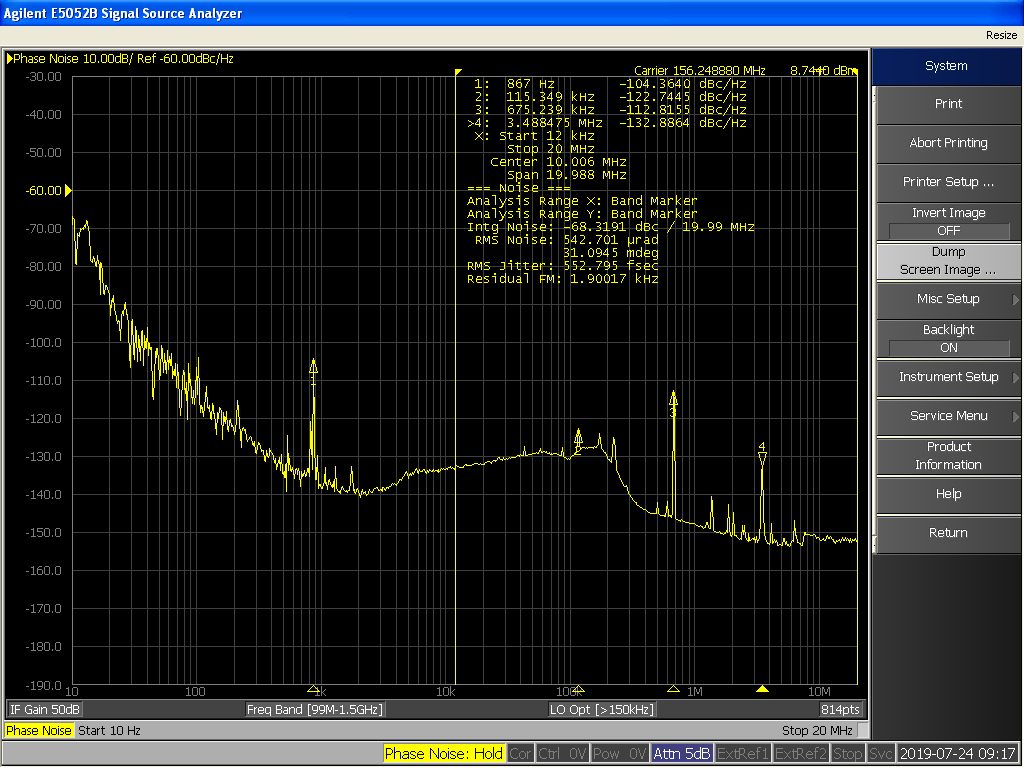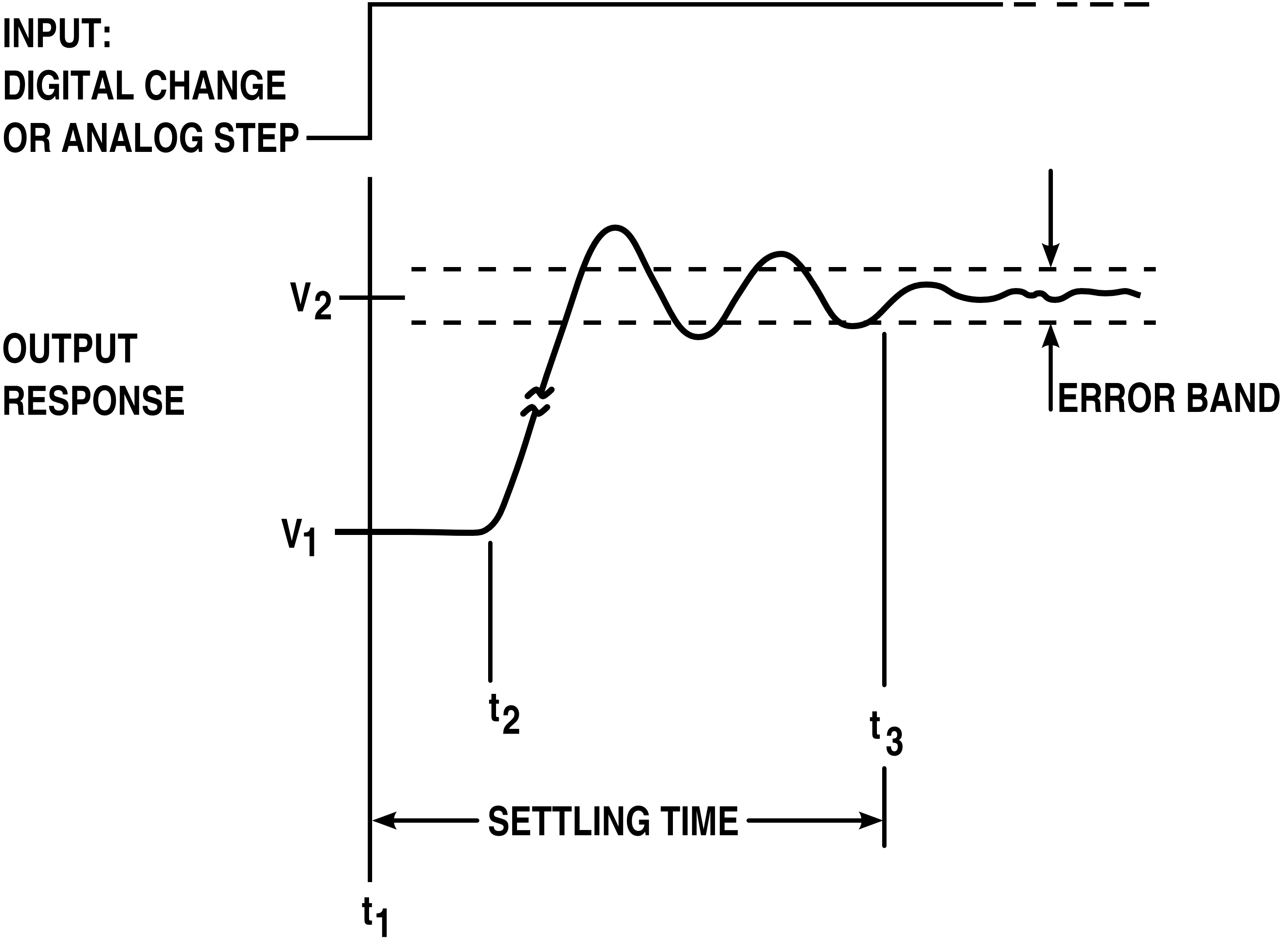|
Degradation (telecommunications)
In telecommunication, degradation is the loss of quality of an electronic signal, which may be categorized as either "'' graceful''" or "''catastrophic''", and has the following meanings: #The deterioration in quality, level, or standard of performance of a functional unit. #In communications, a condition in which one or more of the required performance parameters fall outside predetermined limits, resulting in a lower quality of service. There are several forms and causes of degradation in electric signals, both in the time domain and in the physical domain, including runt pulse, voltage spike, jitter, wander, swim, drift, glitch, ringing, crosstalk, antenna effect (not the same antenna effect as in IC manufacturing), and phase noise. Degradation usually refers to reduction in quality of an analog or digital signal. When a signal is being transmitted or received, it undergoes changes which are undesirable. These changes are called degradation. Degradation is usually caused ... [...More Info...] [...Related Items...] OR: [Wikipedia] [Google] [Baidu] |
Telecommunication
Telecommunication, often used in its plural form or abbreviated as telecom, is the transmission of information over a distance using electronic means, typically through cables, radio waves, or other communication technologies. These means of transmission may be divided into communication channels for multiplexing, allowing for a single medium to transmit several concurrent Session (computer science), communication sessions. Long-distance technologies invented during the 20th and 21st centuries generally use electric power, and include the electrical telegraph, telegraph, telephone, television, and radio. Early telecommunication networks used metal wires as the medium for transmitting signals. These networks were used for telegraphy and telephony for many decades. In the first decade of the 20th century, a revolution in wireless communication began with breakthroughs including those made in radio communications by Guglielmo Marconi, who won the 1909 Nobel Prize in Physics. Othe ... [...More Info...] [...Related Items...] OR: [Wikipedia] [Google] [Baidu] |
Glitch
A glitch is a short-lived technical fault, such as a transient one that corrects itself, making it difficult to troubleshoot. The term is particularly common in the computing and electronics industries, in circuit bending, as well as among players of video games. More generally, all types of systems including human organizations and nature experience glitches. A glitch, which is slight and often temporary, differs from a more serious bug which is a genuine functionality-breaking problem. Alex Pieschel, writing for ''Arcade Review'', said: bug' is often cast as the weightier and more blameworthy pejorative, while 'glitch' suggests something more mysterious and unknowable inflicted by surprise inputs or stuff outside the realm of code". The word itself is sometimes humorously described as being short for "gremlins lurking in the computer hardware". Etymology Some reference books, including ''Random House's American Slang'', state that the term comes from the German word as ... [...More Info...] [...Related Items...] OR: [Wikipedia] [Google] [Baidu] |
Fault Tolerance
Fault tolerance is the ability of a system to maintain proper operation despite failures or faults in one or more of its components. This capability is essential for high-availability, mission-critical, or even life-critical systems. Fault tolerance specifically refers to a system's capability to handle faults without any degradation or downtime. In the event of an error, end-users remain unaware of any issues. Conversely, a system that experiences errors with some interruption in service or graceful degradation of performance is termed 'resilient'. In resilience, the system adapts to the error, maintaining service but acknowledging a certain impact on performance. Typically, fault tolerance describes computer systems, ensuring the overall system remains functional despite hardware or software issues. Non-computing examples include structures that retain their integrity despite damage from fatigue, corrosion or impact. History The first known fault-tolerant computer was ... [...More Info...] [...Related Items...] OR: [Wikipedia] [Google] [Baidu] |
Digital Electronics
Digital electronics is a field of electronics involving the study of digital signals and the engineering of devices that use or produce them. It deals with the relationship between Binary number, binary inputs and outputs by passing electrical signals through Logic gate, logical gates, Resistor, resistors, Capacitor, capacitors, Amplifier, amplifiers, and other Electronic component, electrical components. The field of digital electronics is in contrast to analog electronics which work primarily with analog signals (signals with varying degrees of intensity as opposed to on/off two state binary signals). Despite the name, digital electronics designs include important analog design considerations. Large assemblies of logic gates, used to represent more complex ideas, are often packaged into integrated circuits. Complex devices may have simple electronic representations of Boolean logic#Digital electronic circuit design, Boolean logic functions. History The binary number system was ... [...More Info...] [...Related Items...] OR: [Wikipedia] [Google] [Baidu] |
Radio
Radio is the technology of communicating using radio waves. Radio waves are electromagnetic waves of frequency between 3 hertz (Hz) and 300 gigahertz (GHz). They are generated by an electronic device called a transmitter connected to an antenna which radiates the waves. They can be received by other antennas connected to a radio receiver; this is the fundamental principle of radio communication. In addition to communication, radio is used for radar, radio navigation, remote control, remote sensing, and other applications. In radio communication, used in radio and television broadcasting, cell phones, two-way radios, wireless networking, and satellite communication, among numerous other uses, radio waves are used to carry information across space from a transmitter to a receiver, by modulating the radio signal (impressing an information signal on the radio wave by varying some aspect of the wave) in the transmitter. In radar, used to locate and track ob ... [...More Info...] [...Related Items...] OR: [Wikipedia] [Google] [Baidu] |
Phase Noise
In signal processing, phase noise is the frequency-domain representation of random fluctuations in the phase of a waveform, corresponding to time-domain deviations from perfect periodicity (jitter). Generally speaking, radio-frequency engineers speak of the phase noise of an oscillator, whereas digital-system engineers work with the jitter of a clock. Definitions An ideal oscillator would generate a pure sine wave. In the frequency domain, this would be represented as a single pair of Dirac delta functions (positive and negative conjugates) at the oscillator's frequency; i.e., all the signal's power is at a single frequency. All real oscillators have phase modulated noise components. The phase noise components spread the power of a signal to adjacent frequencies, resulting in noise sidebands. Consider the following noise-free signal: :x(t)= A\cos(2 \pi f_0 t) Phase noise is added to this signal by adding a stochastic process represented by \phi(t) to the signal a ... [...More Info...] [...Related Items...] OR: [Wikipedia] [Google] [Baidu] |
Antenna Effect
The antenna effect, more formally plasma induced gate oxide damage, is an effect that can potentially cause yield and reliability problems during the manufacture of MOS integrated circuits. Factories (''fabs'') normally supply antenna rules, which are rules that must be obeyed to avoid this problem. A violation of such rules is called an antenna violation. The word antenna is something of a misnomer in this context—the problem is really the collection of charge, not the normal meaning of antenna, which is a device for converting electromagnetic fields to/from electrical currents. Occasionally the phrase ''antenna effect'' is used in this context, but this is less common since there are many effects,From the above reference: ''Several major antenna effects are considered, like impedance matching, antenna gain, frequency-dependent radiation patterns, and antenna temporal dispersion in the presence of the radio channel.'' and the phrase does not make clear which is meant. Fig ... [...More Info...] [...Related Items...] OR: [Wikipedia] [Google] [Baidu] |
Ringing (signal)
In electronics, signal processing, and video, ringing is oscillation of a signal, particularly in the step response (the response to a sudden change in input). Often ringing is undesirable, but not always, as in the case of resonant inductive coupling. It is also known as hunting. It is also known as ripple, particularly in electricity or in frequency domain response. Electrical circuits In electrical circuits, ringing is an oscillation of a voltage or current. Ringing can be undesirable because it causes extra current to flow, thereby wasting energy and causing extra heating of the components; it can cause unwanted electromagnetic radiation to be emitted; it can increase settling time for the desired final state; and it may cause unwanted triggering of bistable elements in digital circuits. Ringy communications circuits may suffer falsing. Two electrical sources of this ringing are: # A resonant transient response due to undesired parasitic capacitances and inductanc ... [...More Info...] [...Related Items...] OR: [Wikipedia] [Google] [Baidu] |
Drift (telecommunication)
In telecommunications, a drift is a comparatively long-term change in an attribute, value, or operational parameter of a system or equipment. The drift should be characterized, such as "diurnal frequency drift" and "output level drift." Drift is usually undesirable and unidirectional, but may be bidirectional, cyclic, or of such long-term duration and low excursion rate as to be negligible. Drift is also common in pseudo-synchronised streaming applications, such as low-latency audio streaming over TCP/IP. Normally both ends of a streaming connection would stay in-sync with a master clock but TCP/IP does not provide this 'master clock' mechanism. Therefore, applications running fixed clocks will drift apart over time and glitches will occur. This is usually fixed by controlling jitter or drift, by slightly altering the clock speed at one end of the connection. See also * Clock drift Clock drift refers to several related phenomena where a clock does not run at exactly the same ... [...More Info...] [...Related Items...] OR: [Wikipedia] [Google] [Baidu] |
Graceful Degradation
Fault tolerance is the ability of a system to maintain proper operation despite failures or faults in one or more of its components. This capability is essential for high-availability, mission-critical, or even life-critical systems. Fault tolerance specifically refers to a system's capability to handle faults without any degradation or downtime. In the event of an error, end-users remain unaware of any issues. Conversely, a system that experiences errors with some interruption in service or graceful degradation of performance is termed 'resilient'. In resilience, the system adapts to the error, maintaining service but acknowledging a certain impact on performance. Typically, fault tolerance describes computer systems, ensuring the overall system remains functional despite hardware or software issues. Non-computing examples include structures that retain their integrity despite damage from fatigue, corrosion or impact. History The first known fault-tolerant computer was S ... [...More Info...] [...Related Items...] OR: [Wikipedia] [Google] [Baidu] |
Wander
In electronics and telecommunications, jitter is the deviation from true periodicity of a presumably periodic signal, often in relation to a reference clock signal. In clock recovery applications it is called timing jitter. Jitter is a significant, and usually undesired, factor in the design of almost all communications links. Jitter can be quantified in the same terms as all time-varying signals, e.g., root mean square (RMS), or peak-to-peak displacement. Also, like other time-varying signals, jitter can be expressed in terms of spectral density. Jitter period is the interval between two times of maximum effect (or minimum effect) of a signal characteristic that varies regularly with time. Jitter frequency, the more commonly quoted figure, is its inverse. ITU-T G.810 classifies deviation lower frequencies below 10 Hz as ''wander'' and higher frequencies at or above 10 Hz as ''jitter''. Jitter may be caused by electromagnetic interference and crosstalk with carrie ... [...More Info...] [...Related Items...] OR: [Wikipedia] [Google] [Baidu] |






